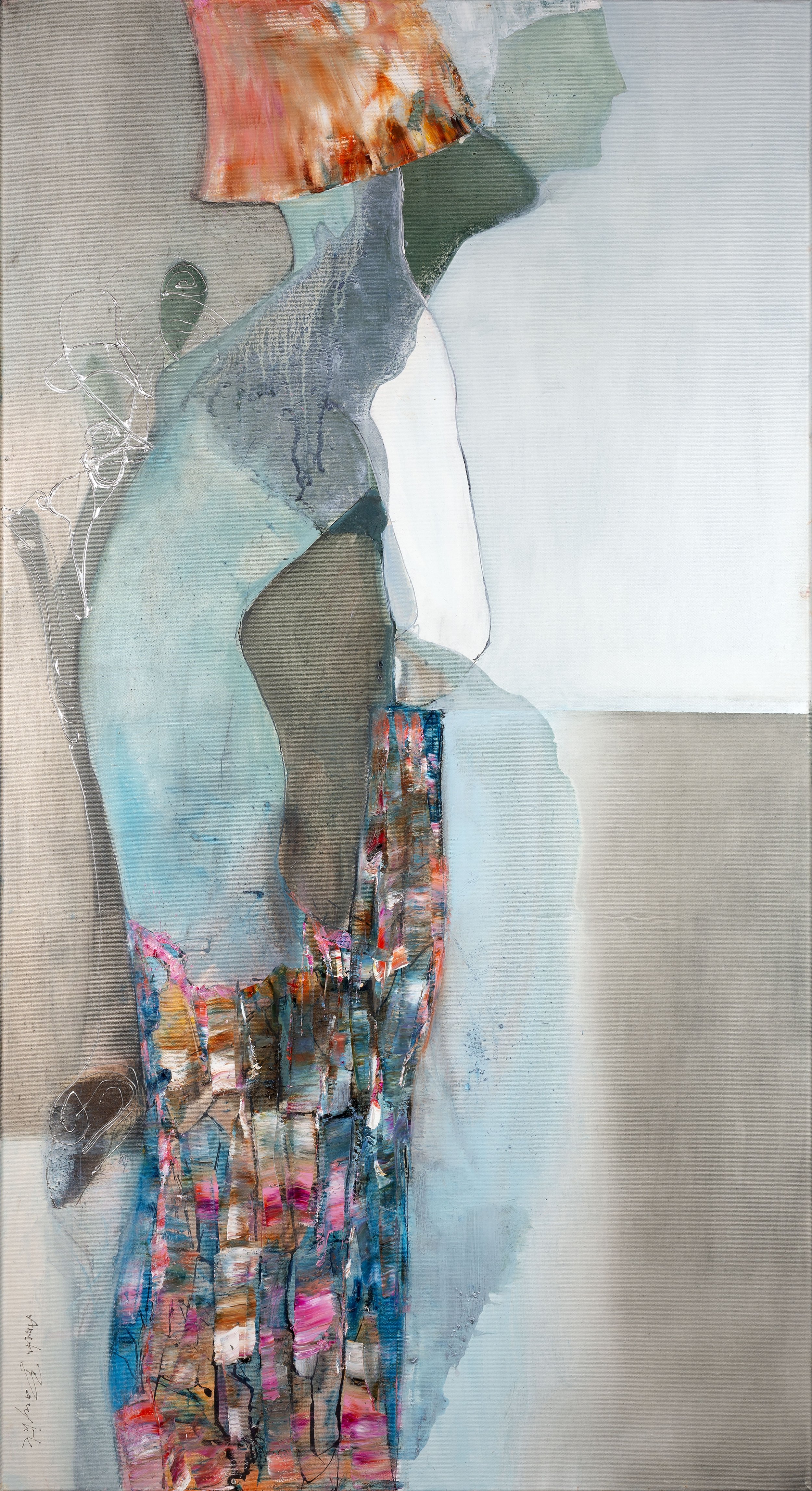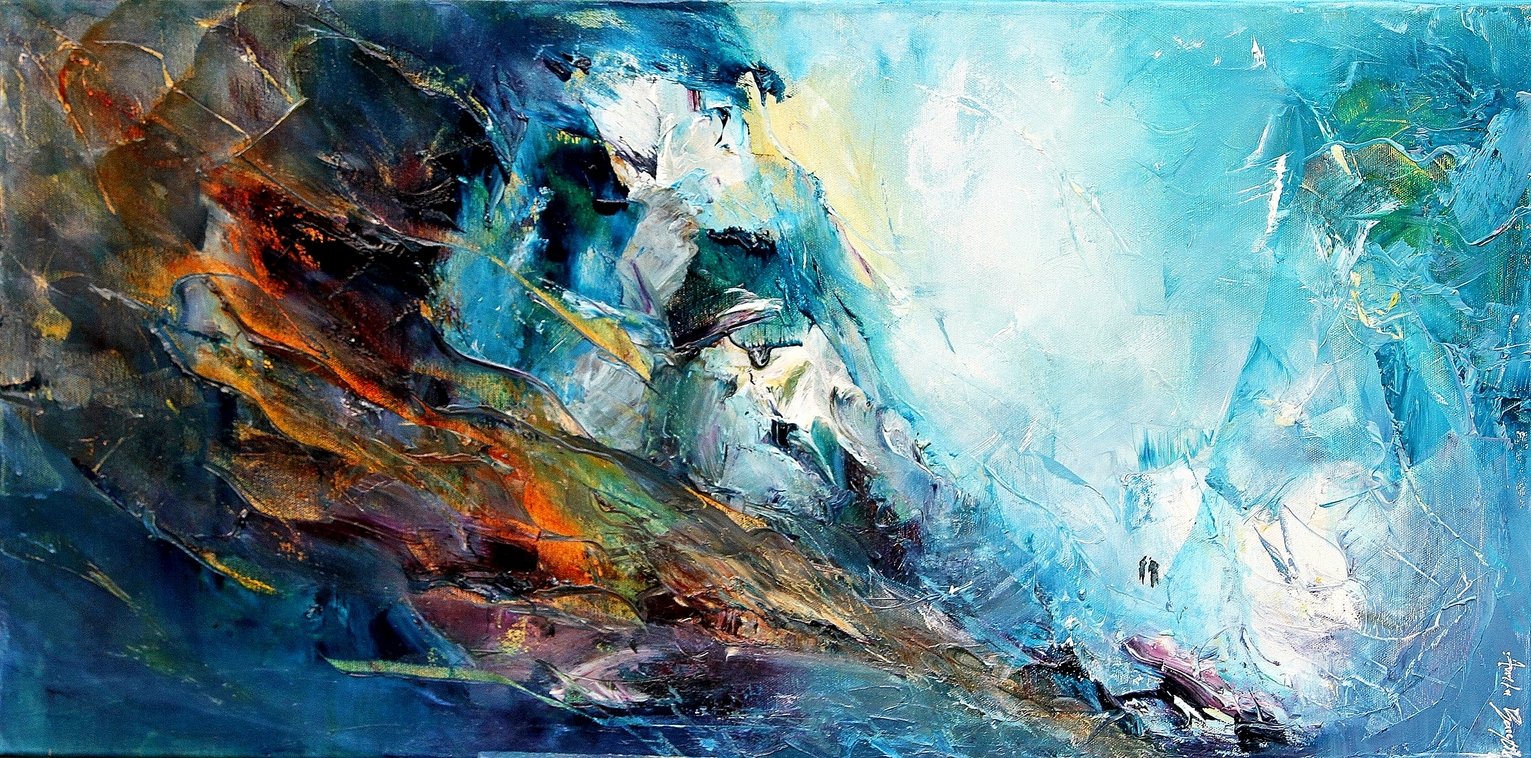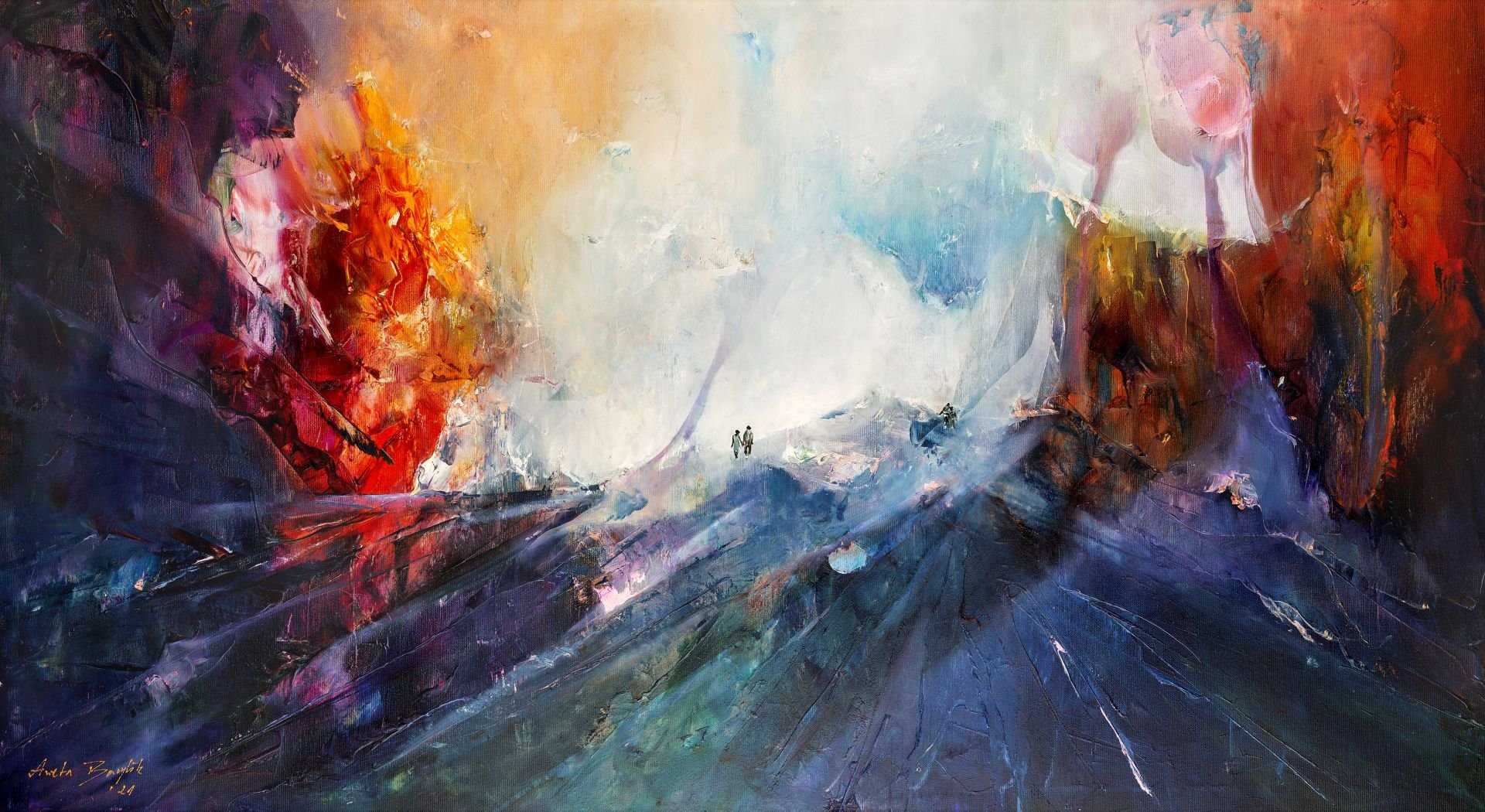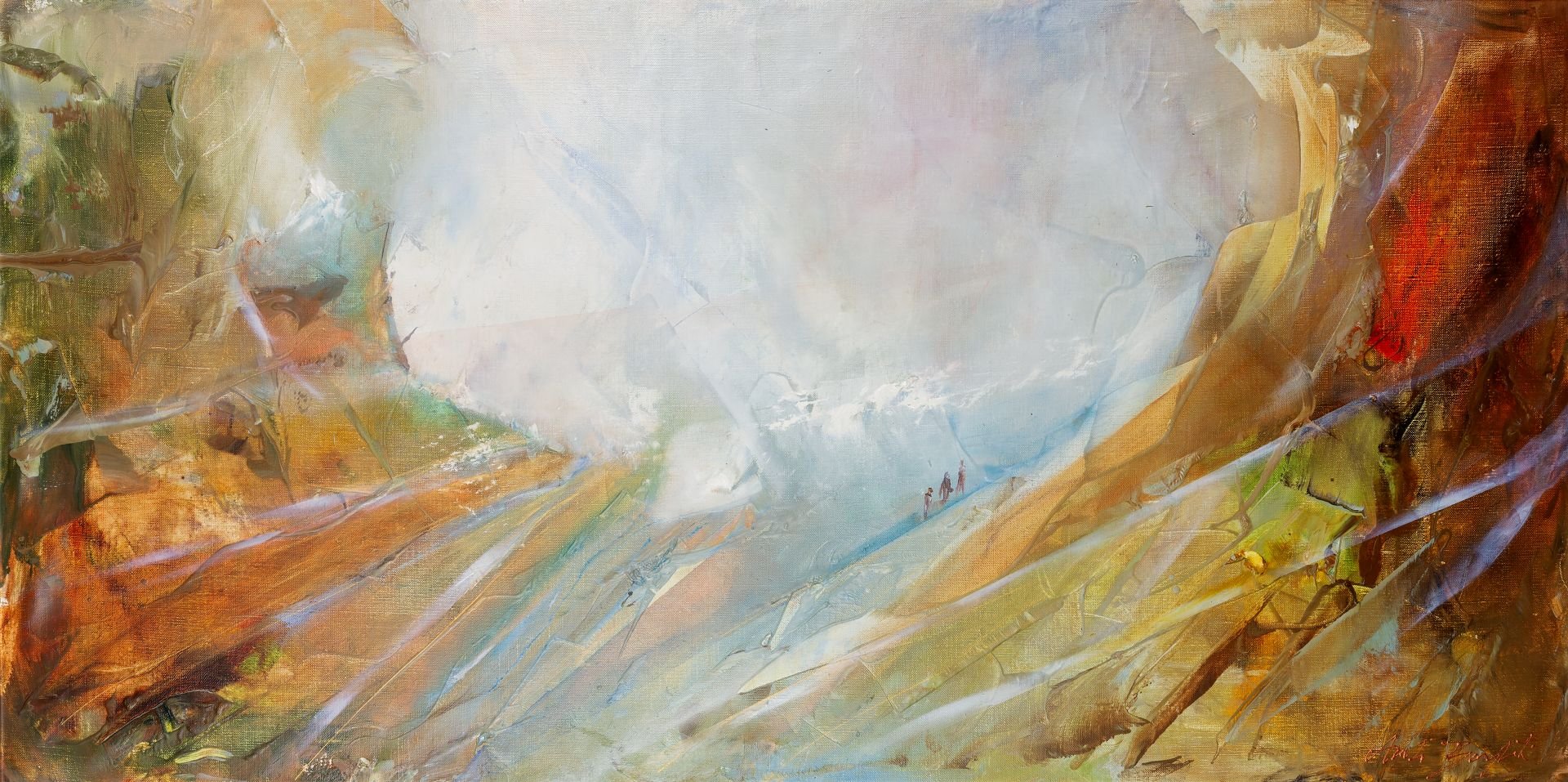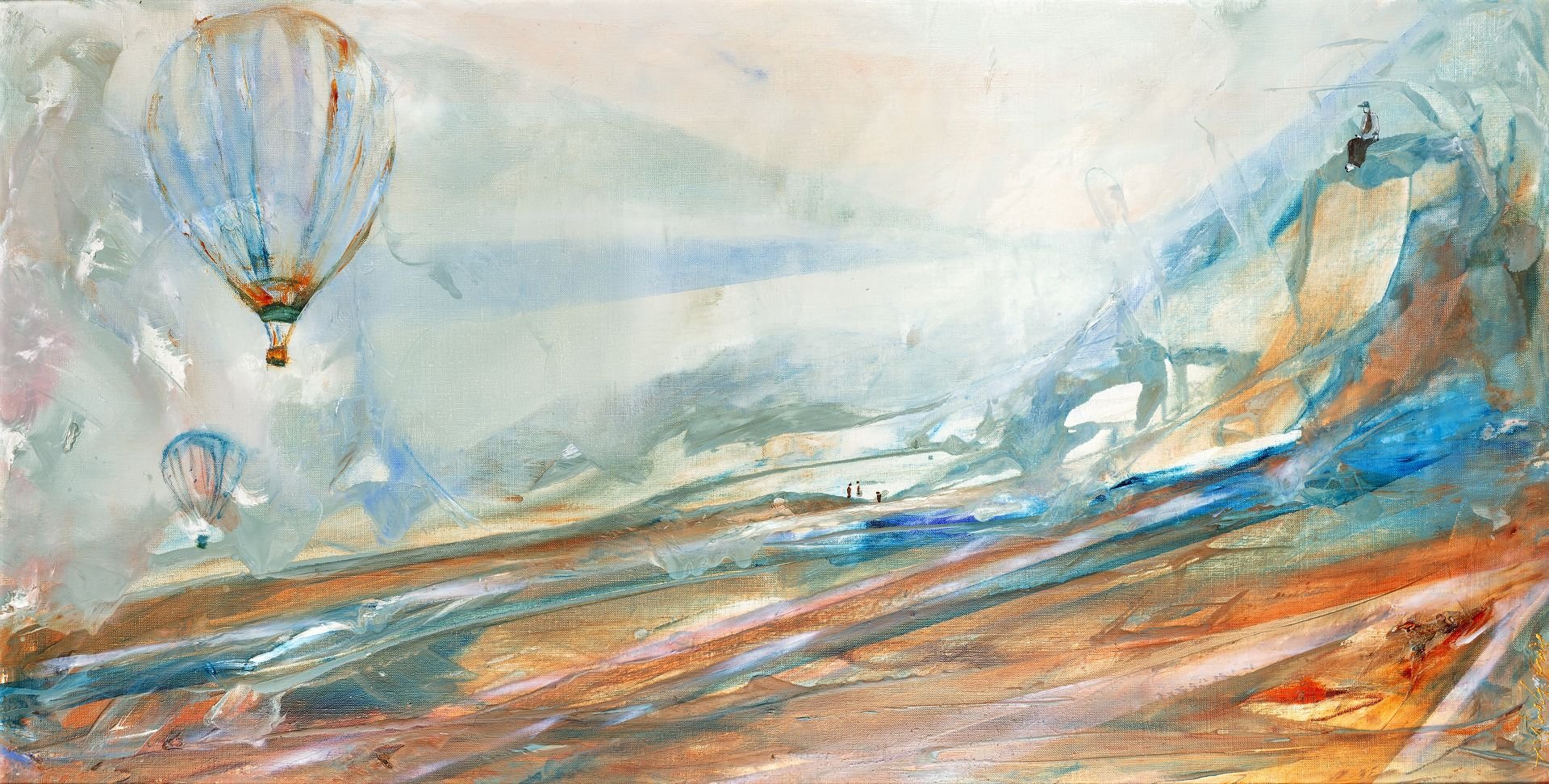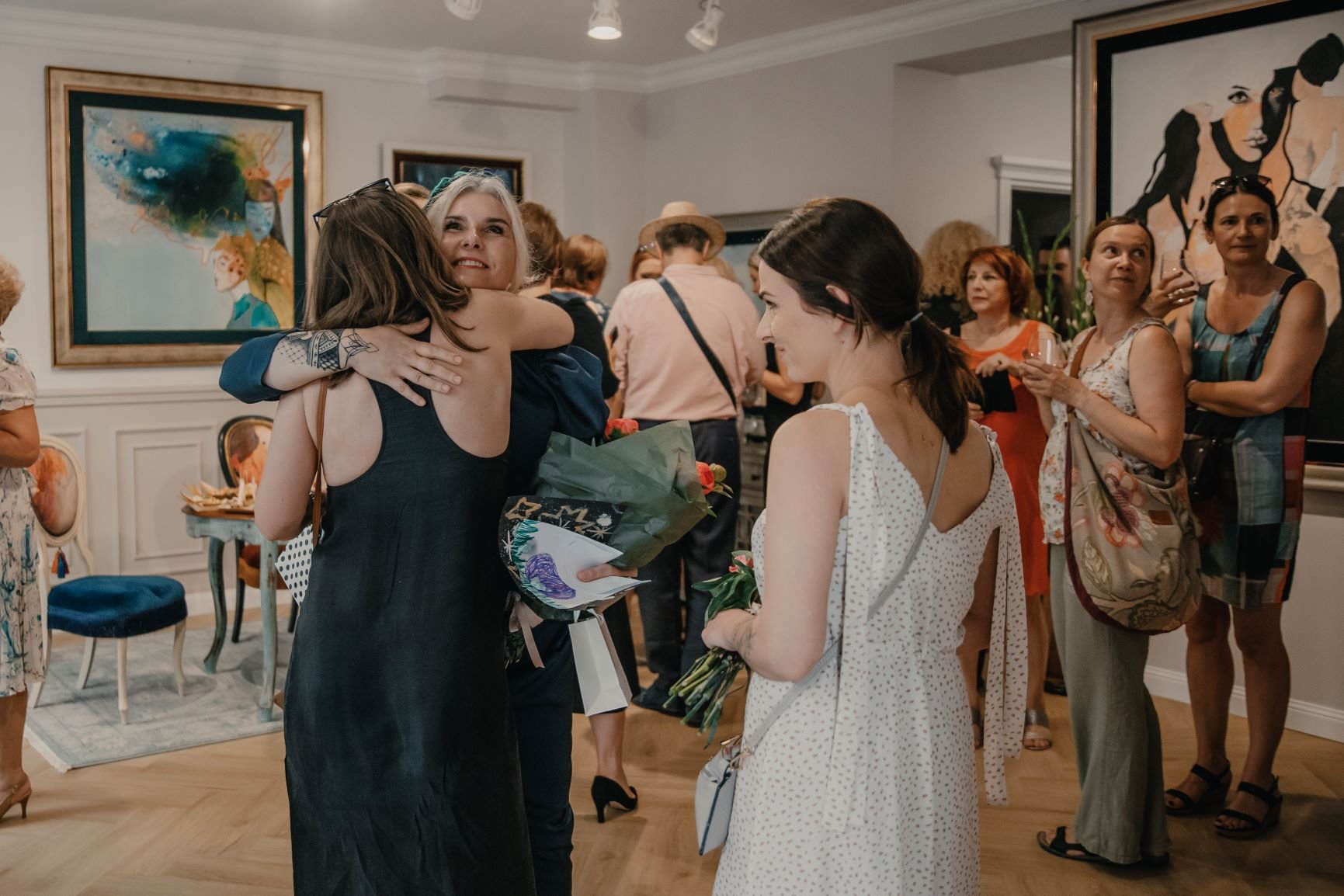Interview
Aneta Barglik
Aneta Barglik is a Polish abstract painter moving in the expressionist movement. She is a graduate of the Institute of Fine Arts in the Department of Easel Painting of Jan Długosz Academy in Częstochowa, Marian Jarzemski’s studio.
Aneta’s painting is a joyful world—a world of memories, new desires and dreams. Her paintings are emotional landscapes; frames cut out of everyday life dressed in forms and colors, and translated into the language of fantasy.
Each picture is contemplated for a long time in all its richness and multidimensionality, while guessing and recognizing the further meanings. When painting, Aneta strives to create a new reality out of the one already existing in its own way. Antea is a participant of many national and international collective exhibitions.
What is your background and how did you start your journey in the art world?
“I’ve been interested in art for as long as I can remember. When I was little, I knew for certain that I wanted to take care of my artistic side, but I experienced various turbulences in life. Nonetheless, I’m at the point where I have intuitively arrived at my destination. My dreams and plans had to wait for a while, but I was finally able to realize them and finish my art studies. This has proven to be very optimistic, and shows that it is never too late to fulfill your dreams. Just work stubbornly towards your goal.
Painting is my passion. I have an extroverted personality that is optimistic about life and that loves colors. On the other hand, I have an extremely introverted person inside me who is afraid of the world and the future of our civilization.”
"Her art is a floating of color to get lost in, like an energetic and regenerating magma to dive into. The color plays a lead role in the composition, and the shape that it will take on the canvas might change according to our look and experience with it.
Aneta’s art represents the chance of getting lost and letting go, to something involving and cathartic; going beyond boundaries to reach a new reality.
Mental connections correspond to a freedom of the pictorial gesture, in which the unconscious shapes the matter. A living material sought by the artist, who carefully handles the coat of the color to make it pulsating, present and visible."
Critic’s text by Laura Francesca Di Trapni Madrid, España 2018.
What does your work aim to say? Does it comment on any current social or political issues?
“Since Marcel Duchamp, everything is allowed. We have ‘freestyle’. Art that responds to currents or trends seems to me to be a calculation. But on the other hand, the artist doesn’t live in a vacuum, in suspension, so what surrounds them has an impact on them.
My art is me. It’s expressive and dynamic. I often use strong colors. Going deep inside myself is not courage—it’s inevitable. I value diversity and tolerance. This is the world I am searching for; what the eyes of my heart are searching for. And nature is invariable as inspiration, with its boundless imagination and beauty of forms.
Painting is the rest. When I paint, I try to touch not only the memories, but the emotions that are still alive against the background of the stories blurred in the memory. Memories are a secret. Everyone remembers the same event differently. The further they are in time, the weaker the memories become. If they were happy or meaningful, we add something to them to make them bigger. I want the recipient to activate his own memories when he looks at my pictures.
Art can function in a much broader forum and in a much more attractive way, which clearly contributes to a better perception of the message. So I think this is a great field to start discussions.”
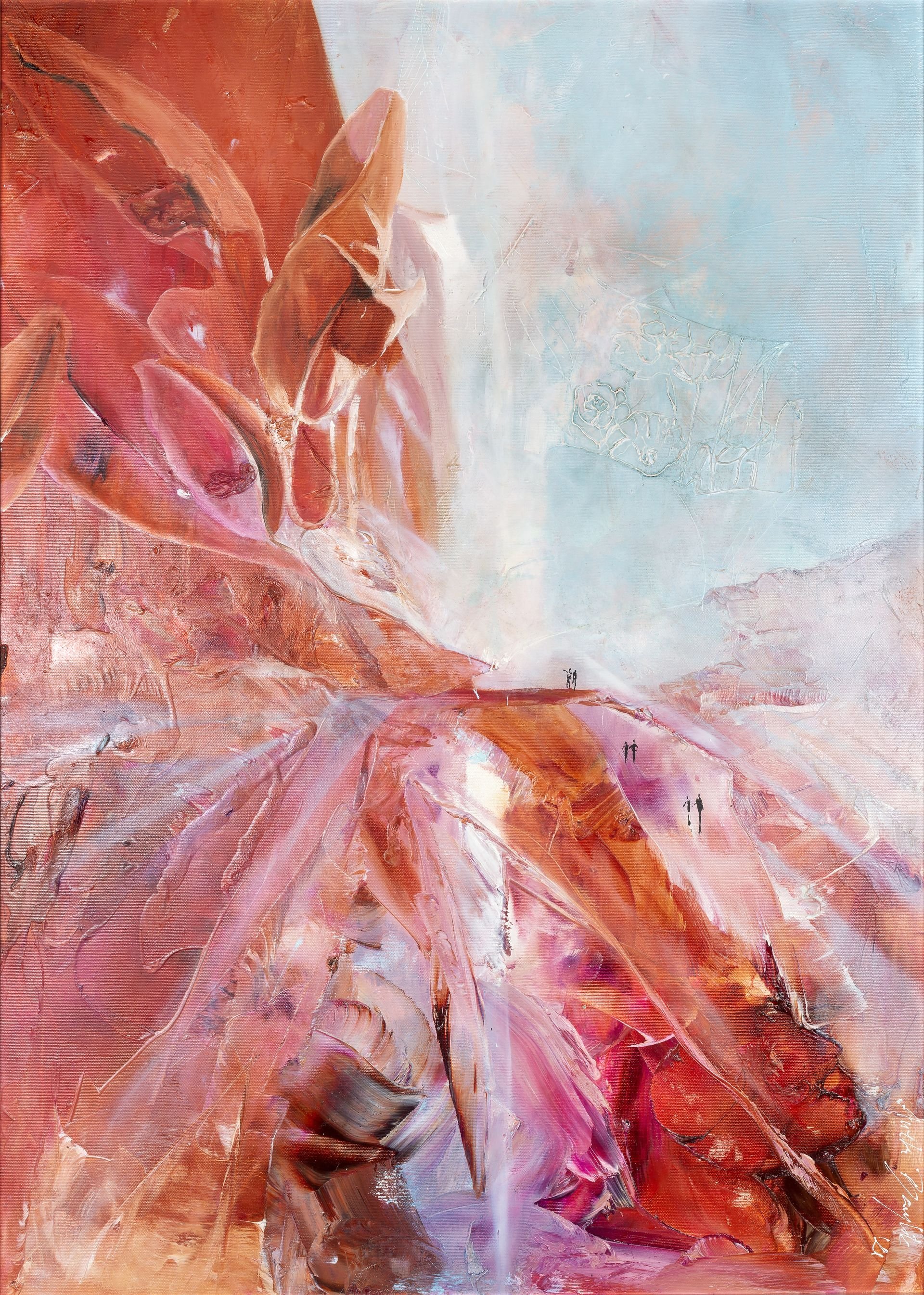
Which current art world trends are you following?
“We live in a world of digitization and as a result, people feel a strong attachment to the smartphone. We are aware of the increasing influence of technology on creation. Trends that have already established themselves in our reality, and will deepen and develop further, are virtual curators and events of exhibitions and vernissages in hybrid form. Thanks to new technologies which help reach the widest possible audience without sacrificing the ‘physical’ version of the fair.
Before our eyes grows the development of the world of crypto and the desire for more and more control of privacy. Recipients expect comfort, peace of mind, and even more personal communication. And above all, a real social commitment that is no longer a trend—that is our reality. They want authenticity and respect for diversity. Therefore, the obvious trend of tokenization of works of art, NFT, is the dissemination of works in digital form. NFT at the service of DEI, or diversity, equity, inclusion.”
“The presence of light in her abstract paintings reveals complex labyrinths that lead to a magical world, where dreams and obsessions, solitude and re-encounters coexist.
The strength of the work is based on the chromatic contrast caused by the overlapping elements, and results in deep three-dimensional environments. The precise but loose movements of the strokes confirm the mastery of the technique, the unlimited freedom and the expressive force of the artist.”
José Roberto Moreira Curator at Collorida Art Gallery, Lisbon, Portugal, 2017.
Do you plan your work in advance, or is it improvisation?
“I mostly act very spontaneously. There is no room for detailed drawings of the compositions or differences over coloring. I design intuitively—I paint with a spatula or with my hands. I want to initiate a creative, expressive act, mostly cheerful yet emotional.
Of course, when it’s time for the finishing touches, I focus on the balance of shapes and colors. I set things down and exercise full control over the project. The process of painting is not the production of a product. I don’t think about painting or finishing a particular work. For me, the picture conveys a story that goes beyond the frame. The coexistence of natural scenery and human artefacts is an extraordinary material that allows the artist to turn a realistic, poetic view of the world upside down; a vision as elusive as changing light. The resulting works are often not so much inspired by a particular object as by a glow of light on the façade; a shimmering disk of water and a rolling sky.”


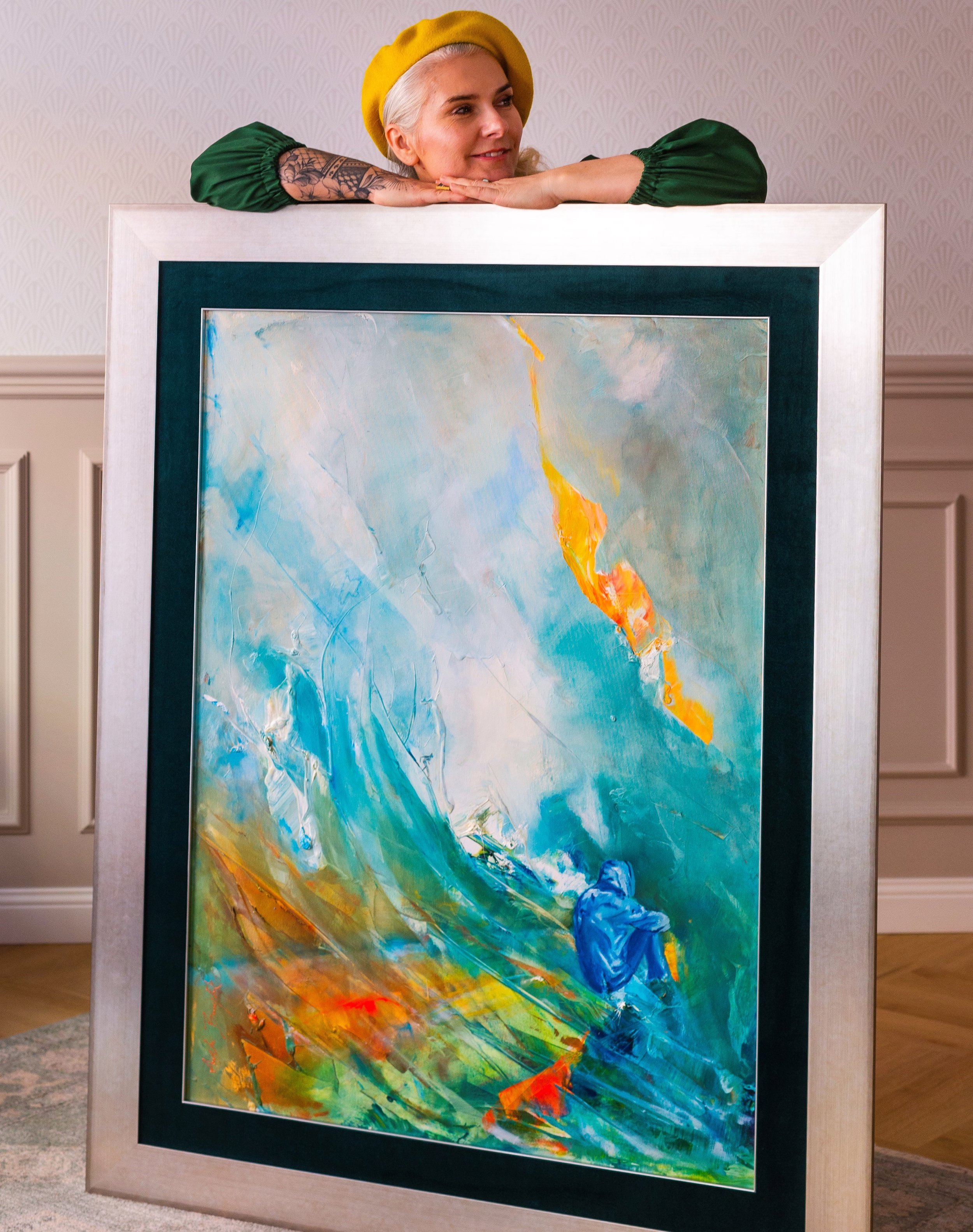
What process, materials and techniques do you use to create your artwork?
“I use oil paints for the sake of their gratitude. The oils are noble, offer great work possibilities, and do not dry immediately, which is very important for me. I usually work on a picture for a certain period of time, or put it aside to come back to later. Oil paints work best with such a system. I also work expressively and like the effect of oils. As I paint, I explore the same areas over and over again, coating the canvas with additional layers of paint, always discovering new color qualities, light and dynamism.”
What does your art mean to you?
"Our reality is multidimensional—outside in everyday life, and inside in the heart and mind. What is important is not the visible, but what lies beneath in the sphere of invisibility. Naturally, it seems to bring out that thread that the recipient must pick up in order to tell the story that was initiated in the picture. To construct a picture with that structure is very demanding but beautiful. Through my art, I’ll show you the beauties of this world, a perfect world. The goal of art should not be a diluted intellectual distillate, but an intense, radiant life. This is the world I am searching for.”
What’s your favorite artwork and why?
“Teresa Pągowska and Francis Bacon are at the top of my list. I like Teresa’s paintings because they convey emotions. I love the way she brings emotionality and freedom to it. In Bacon’s case, it was an interesting process to subordinate life to art, to be here and there, and to translate everything into painting.
Albrecht Dürer, Leonardo da Vinci, Zbigniew Beksiński and Aubrey Beardsley are my masters of the stroke, while Henri Matisse, Olaf Hajek and Frida Kahlo are masters of color handling.”

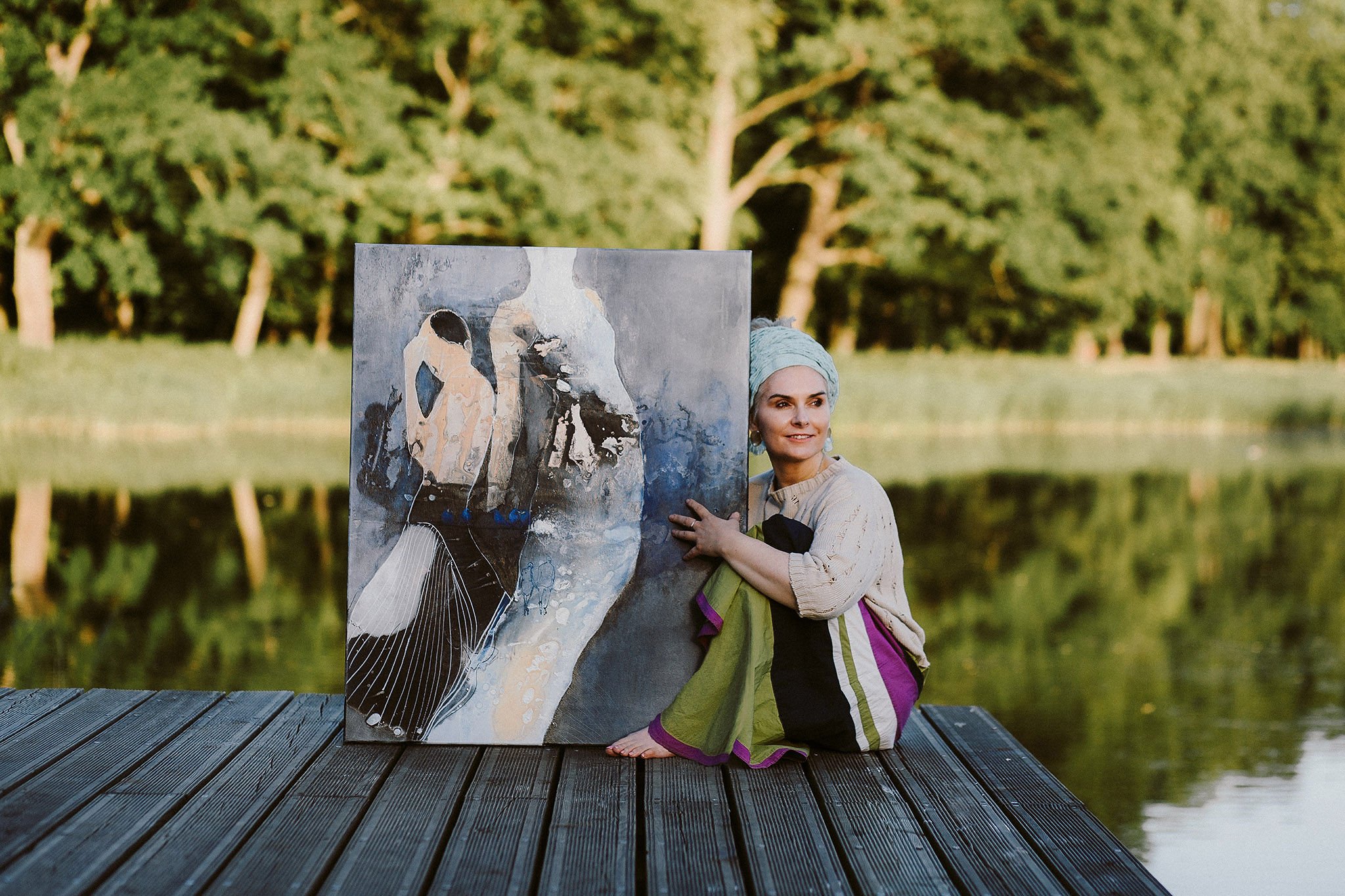
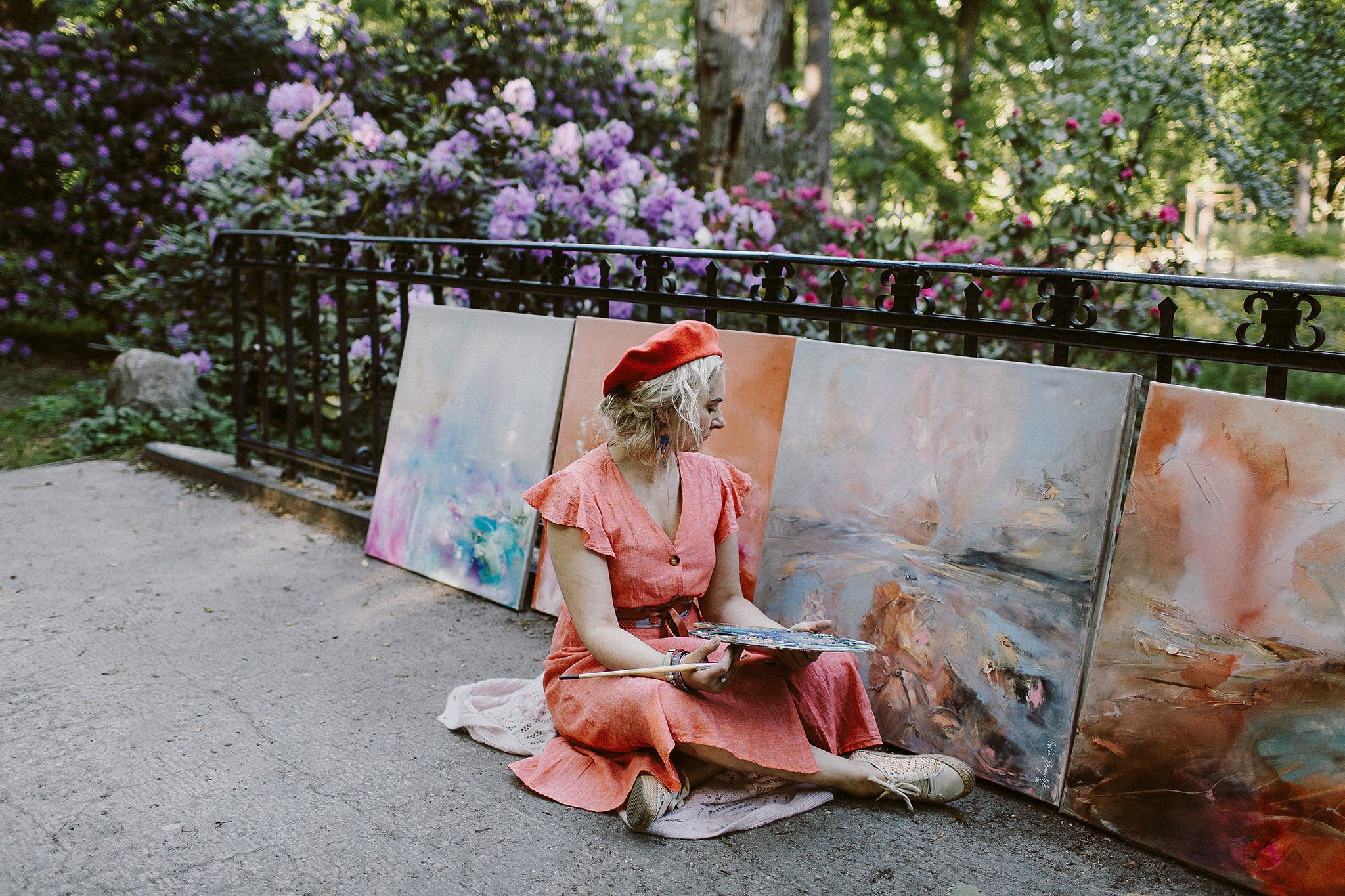
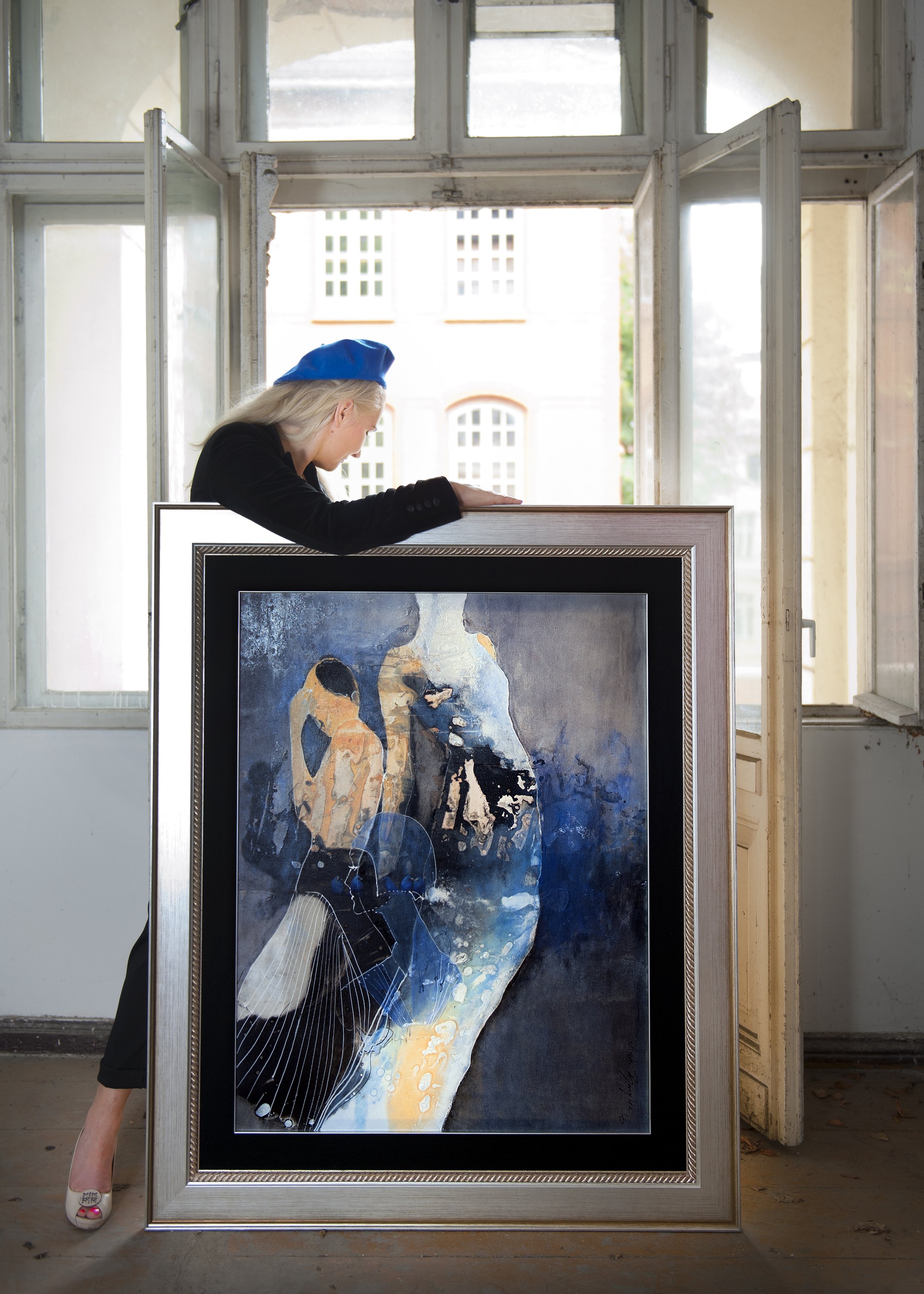
Have you had any noteworthy exhibitions you'd like to share?
“Each of the exhibitions listed below was unique because it was an experience and a test. It is an incredible feeling to meet people who like your art and share their feelings.
Exhibitions:
2021 - Otwarcie Aneta Barglik Gallery. Galeria Autorska, Rynek Opole-Opole,Poland.
2020 - Targi Dobry Design, Concordia Design Wrocław-Wrocław, Poland.- Art Rome-Internetional Art EXPO, Flyer Art Gallery-Roma, Italy.
- Targi Sztuki Dostępnej, Wiosna 2020, I wydarzenie Online, Poland.
- Targi Dobry Design, Concordia Design Wrocław-Wrocław, Poland.
- Jestem, Ana Dom,Wystawa Plenerowa-Opole, Poland.
2019 - Timeless Mood. Micro Arti Visive. Roma, Italy.
- Nothing But Art. Palazzo Veli Expo Anna Isopo Arte Borgo Gallery. Roma, Italy.
- XXXIII Auction of New Art. Auction House Art in House, Sopot, Poland.
- Barwna Rzeczywistość. Noc Kultury, Miejski Dom Kultury, Lubliniec. Poland.
- Targi Sztuki Dostępnej Jesień 2019, Babka do Wynajęcia, Warszaw.
2018 - Obecność, Filharmonia Opolska im. Józefa Elsnera,Opole, Poland.
- Woman’s Essence Show 2018. Musa International Art Space, Madrid, España.
- We Contemporary Art Show 2018. Museum of Jobs Foundation. Palermo, Italy.
- Contemporary Venice 2018- ITSLIQUID International Art Show, Venice, Italy.
2017 - Yann Argentin. Colorida Art Gallery, Lizbon, Portugal.
- Fragmenty Czasu. Nowy Świat Muzyki Warszawa, Poland.
- Malarze 5. Galeria Konduktorownia, Częstochowa, Poland.
2016 - Abstract Art. The Brick Lane Gallery, London.
- Abstract Art. 504 Gallery Room, London.
- Rysunkarze. Galeria Konduktorownia, Częstochowa, Poland.
- Pomiędzy. Galeria Sztuk Wszelakich, MOK Kędzierzyn Kożle, Poland.
2015 - NieOczywistość. Stacja Muranów, Warszawa, Poland.
- Malarze 3. Galeria Konduktorownia, Częstochowa, Poland.”





